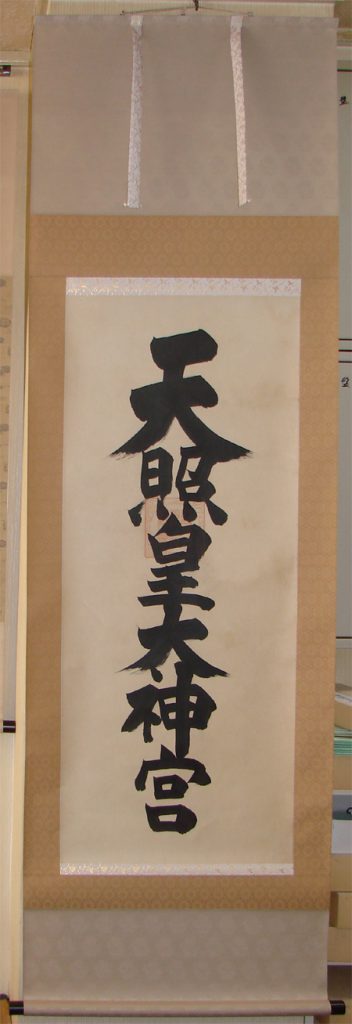Restoration Antique Japanese Kakejiku Scroll: Tenshō Kōtai Jingū
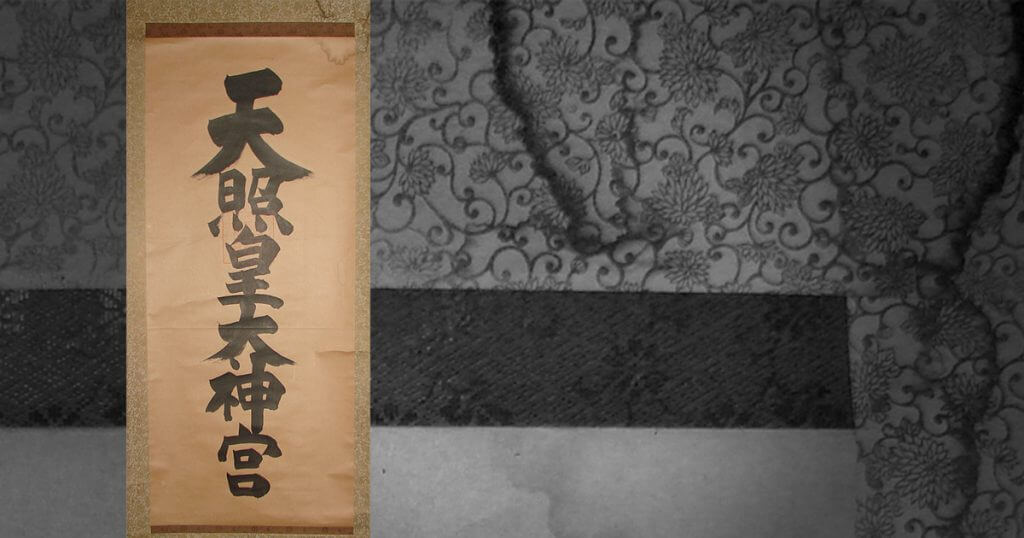
Some troubles arise with kakejiku. The long-term use causes creases, dirt and stains. In such a case, we recommend you to consult a scroll mounter like us for restoration.
(If a nonprofessional tries to repair the scroll in unskilled manner, it will not only make its condition worse but even become beyond repair.)
This time, I will introduce the restoration of kakejiku which has creases, dirt and stains. In the center, there’s calligraphy of “Tenshō Kōtai Jingū ”
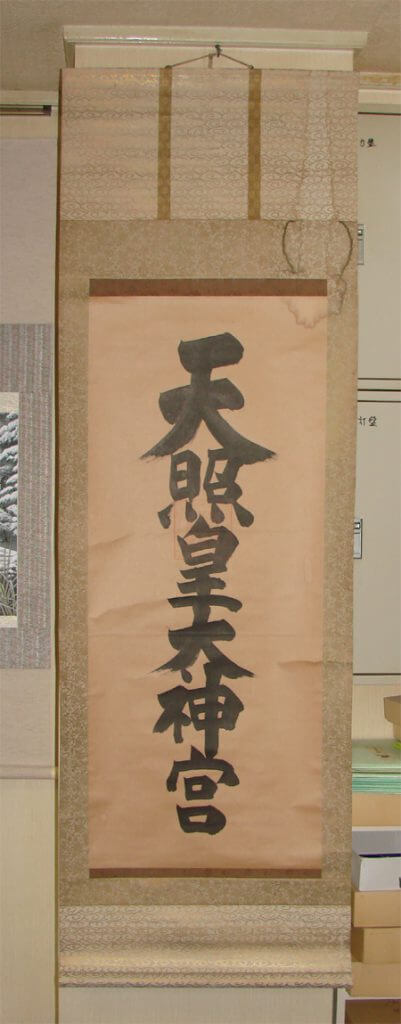
A kakejiku with the calligraphy “Tenshō Kōtai Jin(gū)” is one of the most common type of kakejiku in Japan. It represents the supreme god in Japanese mythology and it is considered as The Sun Goddess. Because there is a custom of “visiting and seeing the sunrise on New Year’s Day” in Japan, many people display this kakejiku during New Year. Also, there are cases that farmers display this kakejiku for praying to the Sun Goddess for good harvest.
This kakejiku of Tenshō Kōtai Jin is badly damaged. You can see a big rain stain at the top right had reached to the main artwork.
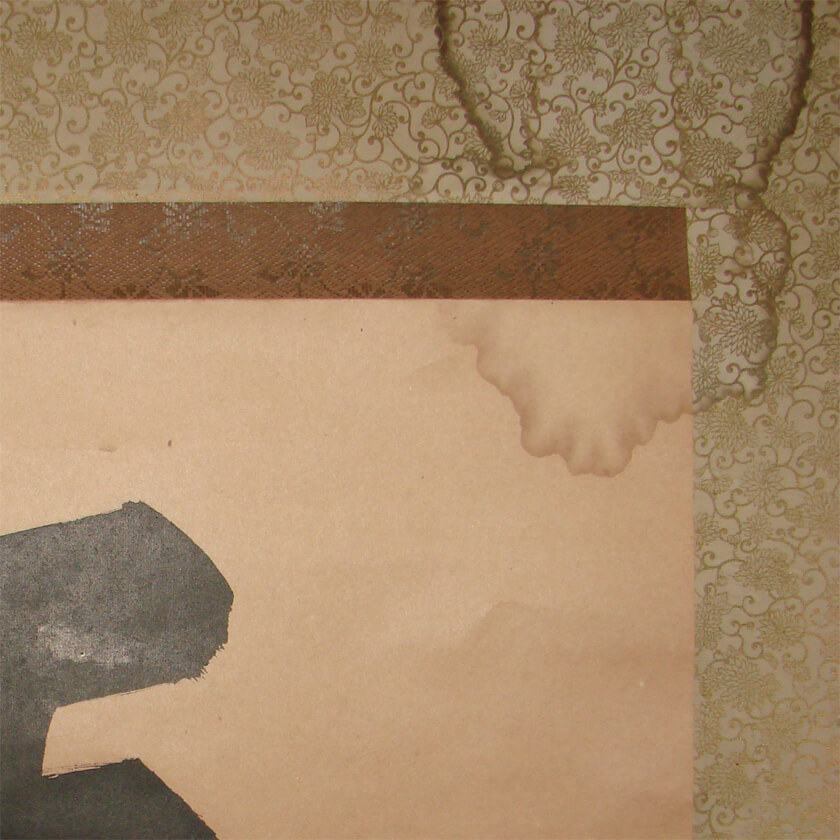
There are some creases, too.
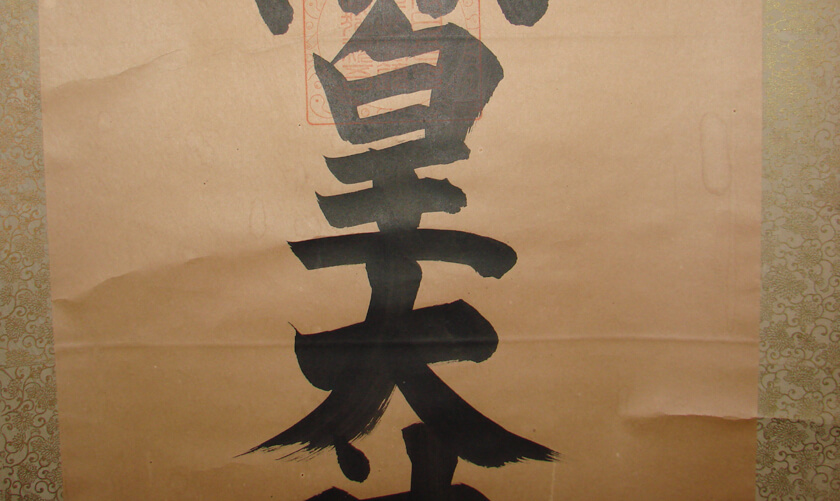
Restoration (Remounting) Process
The general flow of this restoration process is below.
01. Selection of the mounting fabric
02. Disassembly
03. Removal of the old backing paper
04. Cleaning
05. Mounting
If you want to know remounting process more, please refer to the below video.
Restoration: Tenshō Kōtai Jingū Kakejiku
stain removal, we were sure the work would become clean with washing only. Whether to do stain removal or not depends a lot on scroll mounter’s experience. We use powerful detergent for this process. Not all artworks are created equal, and some are not able to stand up to the cleaning process that is needed to remove dirt and stain. Therefore, careful judgement is needed.
The creases were also restored beautifully.
Look at this! The cleaning did give a result to the kakejiku and it now looks smooth and refreshed. It came back to life.
Please contact us if you are thinking of restoration kakejiku.

